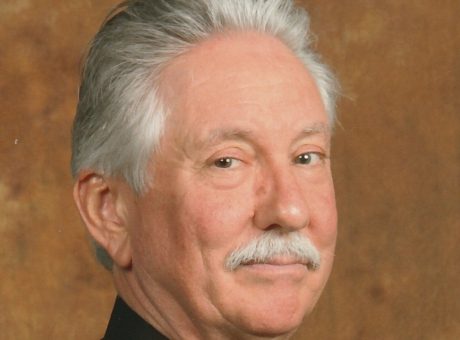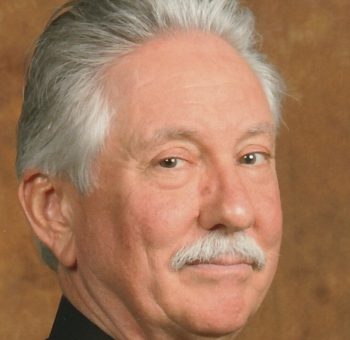
Program Notes February 14, 2015 (By Composer in Residence Bruce Brown)
On February 14th, the JSO will celebrate Valentine’s Day with a very special program called “Romance – Then and Now.”
A centerpiece of the concert will be Robert Schumann’s passionate Cello Concerto performed by soloist Viktor Uzur, a favorite guest artist with the JSO. Uzur most recently appeared with the orchestra in May of 2012 to perform his exciting Duo Concerto for Cello and Guitar, composed in collaboration with guitarist Brad Richter.
Through the ages, composers have written reams of music about the wonderful, complex and mysterious thing we call love. Other selections on the program will present a rich sampling of the many and diverse works inspired by Romantic passions.
The evening will conclude with an exciting set of Romantic standards by jazz singer Sunny Wilkinson, including some special new arrangements by her husband, MSU faculty member Ron Newman.
Dances of Galánta
Some of our most Romantic notions are nostalgic memories of things we loved in our youth.
As a child, composer Zoltán Kodály (1882-1967) spent seven years in Galánta, “a small Hungarian market town known to travelers between Vienna and Budapest.” He was deeply impressed by the music of the gypsy band he heard there. Years later, he found some melodies labeled “after several Gypsies from Galánta” in an old collection of books.
In 1933, Kodály was commissioned to write a work celebrating the eightieth anniversary of the Budapest Philharmonic. He decided to base his new piece the old gypsy tunes, and he produced one of his most popular works, the Dances of Galánta.
Much of the music in these dances reflects the energetic style called Verbunkos, which was developed to help recruit young men into the army, but later became an important motif in 19th century Hungarian folk music.
Cello Concerto A Minor, Op. 129
The love affair between Robert Schumann (1810-1856) and his wife Clara was legendary. Schumann was twenty-five years old, but Clara was only fifteen, when they fell in love. Clara’s father, Friedrich Wieck, was livid! He was also Schumann’s piano teacher, and he shunned his pupil and furiously forbade the couple to have any contact with each other.
Robert and Clara wanted to get married, and they even took the old man to court trying to get permission, but they were forced to wait. They were married on September 12, 1840, the day before her 21st birthday. They were entirely devoted to each other, and their marriage was blessed with eight children. After Robert’s tragic death in an insane asylum, Clara wore black mourning clothes for the remaining forty years of her life.
Schumann wrote his cello concerto in less than two weeks, between the 10th and 24th of October, 1850. It is very popular today, but musicians reacted coolly when he showed them the score. The music was more inward-looking than flashy, and the piece had an unusual structure, with no break between the movements.
Schumann never heard it performed. The first premiere took place on June 9, 1860 – four years after his death – in a concert in honor of his birth at the Leipzig Conservatory.
But Clara loved the music!
About a year after he wrote it, she played through the score on piano, and wrote in her diary: “I have played Robert’s cello concerto through again, thus giving myself a truly musical and happy hour. The romantic quality, the vivacity, the freshness and humor, also the highly interesting interweaving of cello and orchestra are indeed wholly ravishing, and what euphony and deep feeling one finds in all the melodic passages!”
Prelude to Act III from Carmen
The title character of Carmen, by Georges Bizet (1838-1875), is one of the most compelling figures in opera. Bizet’s clean, crisp music, tinged with a Spanish flair, captures her bold, glamorous spirit perfectly. Carmen is at the center of a passionate love triangle, and José, the naïve soldier who has fallen in love with her, kills her in a fit of jealous rage.
When Bizet wrote Carmen, in 1875, it was savaged by critics and the stuffy musicians of the musical establishment, who found the story scandalous. Bizet went into seclusion, severely depressed, and died a short time later. Within five years, Carmen had become a huge success around the world, and today it is an essential part of the repertoire.
Nimrod from Enigma Variations, Op. 36
The Enigma Variations by Sir Edward Elgar (1857-1934), written between October 1898 and February 1899, is one of the great landmarks in British music. It depicts another kind of love, his love for his friends. Each of the fourteen variations on the work’s theme represents an important person in Elgar’s life.
The gorgeous ninth variation, subtitled “Nimrod,” is dedicated to Augustus J. Jaeger, a music editor with Novello and Co. publishers in London. Jaeger could give good advice, Elgar said, but also strong criticism, which Elgar may have appreciated even more.
The name “Nimrod” refers to a figure in the Old Testament, who was “a mighty hunter before the Lord.” Jäger is the German word for “hunter.”
The Nimrod variation has become very popular in its own right. This familiar music is often performed at important funerals, and it was played in the opening ceremony for the London Olympics in 2012.
Intermezzo from Cavalleria rusticana
The love triangle in Carmen is reversed in Cavalleria rusticana (literally “Rustic Chivalry”), a passionate tale of a young man who romances two women and is killed in a duel by a jealous husband.
Its composer, Pietro Mascagni (1863-1945) is known almost exclusively for this work, which is often performed as a kind of twin bill with another short opera, Pagliacci by Ruggero Leoncavallo.
Mascagni wrote the opera in 1888 when Eduardo Sonzogno, a prominent music publisher in Milan, announced a competition for young, unknown opera composers. Mascagni’s work was chosen one of the three winners, and it was performed for the first time in the Teatro Costanzi in Rome on May 17, 1890. The opera’s popularity has been incredible. By the time of Mascagni’s death it had been performed more than 14,000 times, just in Italy!
The famous Intermezzo is performed between the brief opera’s two scenes.
Pavane
The hauntingly beautiful Pavane by Gabriel Fauré (1845-1924) is most often heard as a purely instrumental piece, but the original version for choir and piano had lyrics that playfully poke fun at the Romantic helplessness of men.
Fauré wrote the Pavane in 1887, during a period that came to be known as the Belle Époque (“Beautiful Era”). It was a time of peace, prosperity and optimism, and the arts flourished, especially in Paris.
Fauré created the purely instrumental version for an outdoor concert conducted by Jules Danbé, but he soon wrote a more elaborate version that included choir and dance. This “choreographic spectacle” was dedicated to his patron, Elisabeth, the countess of Greffulhe, whose cousin, Robert de Montesquiou, wrote the frivolous lyrics.
In a letter to his wife, Fauré wrote an intriguing account of the inspiration for his Pavane: “While I was thinking about a thousand different things of no importance whatsoever, a kind of rhythmical theme in the style of a Spanish dance took form in my brain…. This theme developed by itself, became harmonized in different ways, changed and modulated; in effect, it germinated by itself.”
Sunny Wilkinson
Sunny Wilkinson has been described as a “master songstress able to get inside of a song and find its essential emotional core.”
Her performance tonight will include Bennie’s from Heaven, a hilarious paraphrase of Pennies from Heaven (1936) by Johnny Burke and Arthur Johnston, Gershwin’s Fascinating Rhythm from Lady Be Good (1924), Burton Lane and E.Y. Harburg’s Old Devil Moon from Finian’s Rainbow (1947), Not While I’m Around from Sweeney Todd (1979) by Stephen Sondheim, and Thou Swell from Rodgers and Hart’s A Connecticut Yankee (1927).
Sunny’s husband Ron Newman is a long time faculty member at Michigan State University and the former director of MSU’s award winning jazz band. He is an outstanding teacher of jazz improvisation, theory, history and arranging, and he has put together some very special arrangements from tonight’s concert.
Enjoy!

